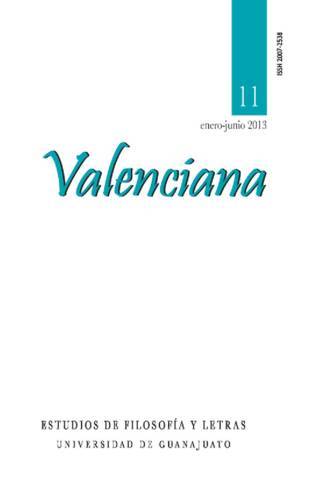¿Qué son los modelos físicos?
DOI:
https://doi.org/10.15174/rv.v0i11.23Keywords:
idealización, abstracción, aproximación, desidealización, concretizaciónAbstract
En este artículo analizamos los principales conceptos propuestos de modelo con el propósito de resaltar el carácter idealizado y abstracto de los modelos físicos, que generalmente es pasado por alto en la literatura filosófica relevante desde diversas posiciones, como el instrumentalismo y el pragmatismo; el cual, sin embargo tiene importantes implicaciones en problemas filosóficos como el del realismo científico. Desde una posición conceptualista, sostenemos que los modelos desidealizados son los vehículos para conceptualizar los sistemas físicos desde la perspectiva de una teoría.References
Bailer-Jones, Daniela M., 2008, “Standing Up Against Tradition Models and Theories in Nancy Cartwright’s Philosophy of Science” en S. Hartmann, C. Hoefer y L. Bovens (eds.), Nancy Cartwright’s Philosophy of Science, Nueva York / Londres, Routledge Studies in the Philosophy of Science, pp. 17-37.
________, 2009, Scientific Models in Philosophy of Science, Pittsburgh, University of Pittsburgh Press.
Balzer, W., U. Moulines y J. Sneed, 1987, An Architectonic for Science, Dordrecht, Reidel.
Cartwright, N., 1983, How the Laws of Physics Lie, Oxford, Clarendon Press.
_____, 1989, Nature´s Capacities and their Measurement, Oxford, Clarendon Press.
Giere, Ronald, 1988, Explaining Science; A Cognitive Approach, Chicago, University of Chicago Press.
Hoefer, C., 2008, “For Fundamentalism” en S. Hartmann, C. Hoefer y L. Bovens (eds.), Nancy Cartwright’s Philosophy of Science, Nueva York / Londres, Routledge Studies in the Philosophy of Science, pp. 307-321.
Hughes, R. I. G., 1997, “Models and Representation”, Philosophy of Science, vol. 64, pp. 325-336.
Liu, Chuang, 2004, “Laws and Models in a Theory of Idealization”, Synthese, vol. 138, pp. 363-385.
McMullin, Ernan, 1985, “Galilean Idealization”, Studies in the History and Philosophy of Science, vol. 16, núm. 3, pp. 247-273.
Morrison, M. y M. Morgan, 1999, “Models as Mediating Instruments” en M. Morrison y M. Morgan (eds.), Models as Mediators, Cambridge, Cambridge University Press, pp. 10-37.
Moulines, C. Ulises, 2002, “Introduction: Structuralism as a Program for Modelling Theoretical Science”, Synthese, vol. 130, pp. 1-11.
_______, 2008, El desarrollo moderno de la filosofía de la ciencia (1890-2000), Xavier de Donato (trad.), México, UNAM, 2011.
Muller, F. A., 2011, “Reflections on the Revolution at Stanford”, Synthese, vol. 183, pp. 87-114.
Redhead, Michael, 1980, “Models in Physics”, British Journal for the Philosophy of Science, vol. 31, núm. 2, pp. 145-163.
Sneed, Joseph, 1971, The Logical Structure of Mathematical Physics, Dordrecht, Reidel.
Suppes, Patrick, 1953, “Filosofía y los fundamentos axiomáticos de la física” en Estudios de filosofía y metodología de la ciencia, José Luis Rolleri (trad.), Madrid, Alianza Universidad, 1988, pp. 21-27.
_____, 1957, Introduction to Logic, Nueva York, Van Nostrand.
_____, 1960, “Una comparación del significado y los usos de los modelos en las matemáticas y las ciencias empíricas” en Estudios de filosofía y metodología de la ciencia, Mario Alberto Cortez Rodríguez (trad.), Madrid, Alianza Universidad, 1988, pp. 109-123.
Tarski, Alfred, 1953, “A General Method in Proofs of Undecidability” en A. Tarski, A. Mostowski y R. M. Robinson (eds.), Undecidable Theories, Amsterdam, North-Holland.
Van Fraassen, Bas, 1980, La imagen científica, Sergio Martínez (trad.), México, Paidós / UNAM, 1996.
Published
How to Cite
Issue
Section
License
Author(s) who publish in this journal do accept the next conditions:
According to copyright regulations, Valenciana does recognize and respect the authors’ moral right, as well as the right of property, which will be assigned to the journal for its diffusion in open access.
Valenciana does not charge authors for the submission, editorial process or publication in the journal.
All texts published and distributed by Valenciana (without exception) are supported by the license Creative Commons Attribution-NonCommercial 4.0 International (CC BY-NC 4.0), which allows third parties to use the publication as long as they mention the author and the first publication.
Authors can make other independent and additional contractual agreements for the non-exclusive use of his article published in Valenciana (e.g. including it in an institutional repository or in printed/electronic media), as long as it is explicitly clarified that the article was published for the first time in this journal.
For these purposes, authors must sign and send the letter of submission and copyright transfer form in a PDF file to this email address: revistavalenciana@gmail.com
This journal is under a license by Creative Commons Atribución-NoComercial-SinDerivadas 4.0 Internacional (CC BY-NC-ND 4.0)).













